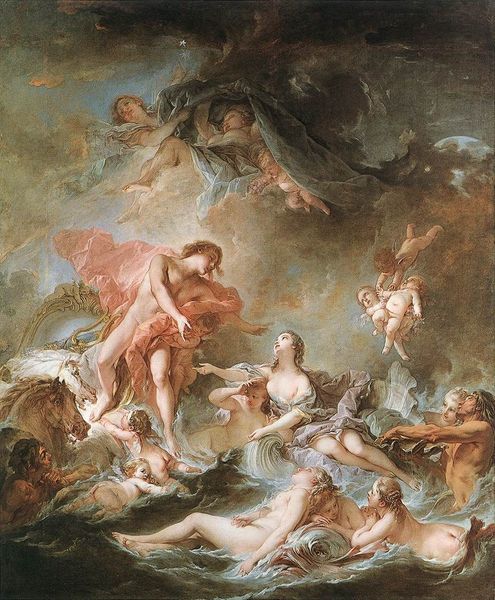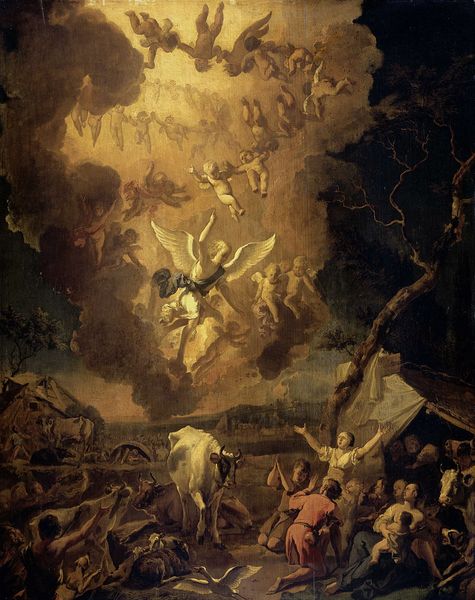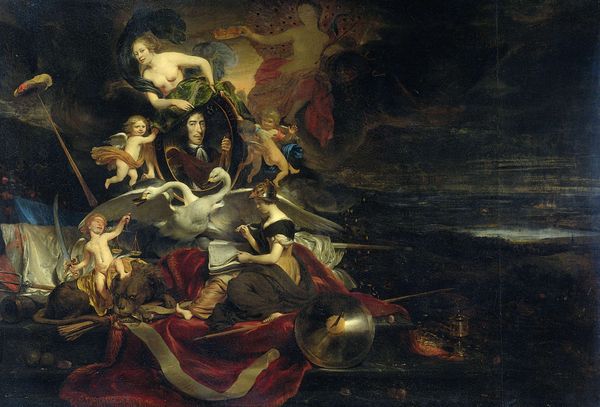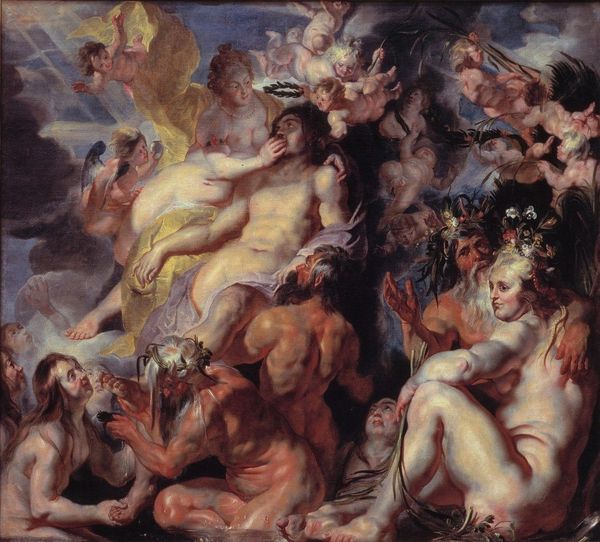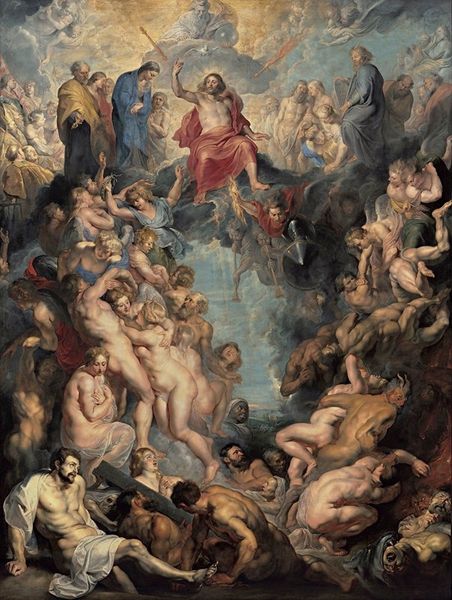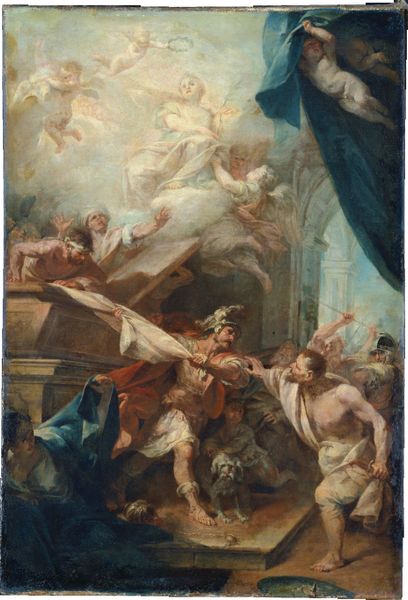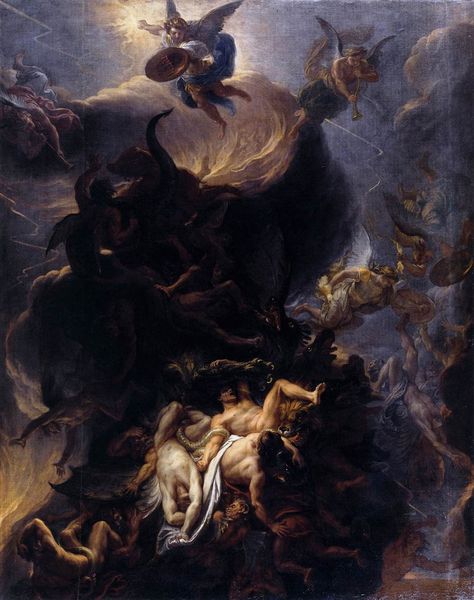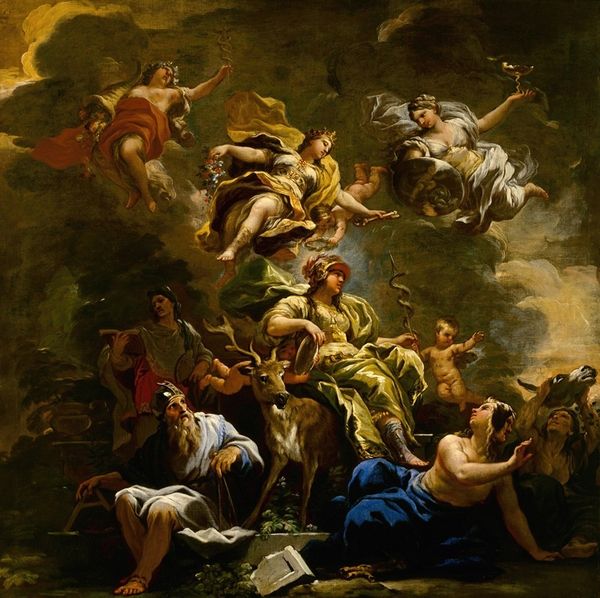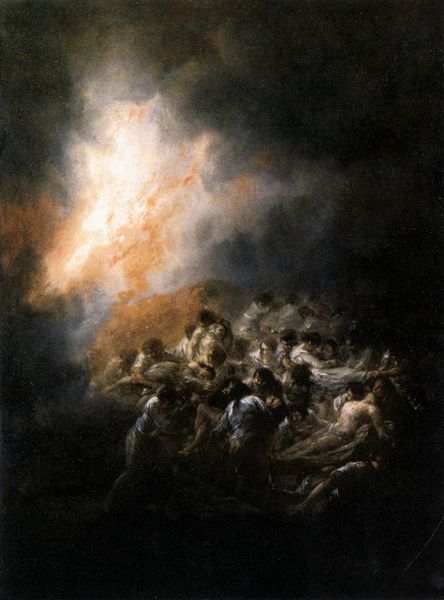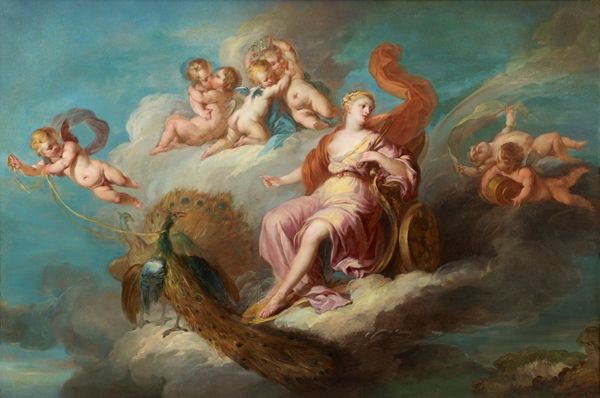
oil-paint
#
sky
#
fantasy art
#
oil-paint
#
landscape
#
figuration
#
romanticism
#
mythology
#
history-painting
Copyright: Public domain
Curator: What strikes me first is the sheer dreaminess, that soft hazy light playing on these ethereal figures. Editor: Well, you're looking at "The Shepherd's Dream, from 'Paradise Lost'", painted in 1793 by Henry Fuseli. A compelling choice from Fuseli’s series inspired by Milton’s epic poem, wouldn't you agree? Curator: Oh, absolutely, but it’s more than compelling, it's unsettling. Like stepping into a half-remembered nightmare. Those dancing figures seem almost predatory. Editor: That’s interesting, isn’t it? Fuseli was a master of the Romantic sublime. He often explored the darker aspects of the human psyche, drawing from sources like Shakespeare and, as in this case, Milton. The era reveled in dramatic, emotional extremes! Curator: You can really feel that in the scale of the thing, can't you? It’s vast! You've got this tiny, vulnerable shepherd, lost in a swirl of female figures—are they angels, or demons? They seem to both comfort and threaten him. Editor: Precisely. Consider the sociopolitical landscape of the time. Revolution was in the air, hierarchies were being challenged. Milton's "Paradise Lost", with its themes of rebellion and the fall from grace, would have resonated deeply. Also, note how women, represented in the painting by an artist with a clear, well...complicated relationship with them, could stand as powerful figures but also subjects of scrutiny and anxiety. Curator: That makes sense. It’s almost like Fuseli's using mythology to work through contemporary anxieties, isn't it? Though as a personal response I can’t shake how those lithe dancing figures create such a beautiful contrast with the shepherd's dark cloak. Editor: I agree; there’s a raw energy to the composition. Fuseli’s style often favored dynamism and strong contrasts to provoke an emotional reaction. And yes, using myth allowed artists to critique society indirectly. These 'dreams' became spaces for exploring forbidden or uncomfortable truths. Curator: Well, seeing the piece within its context certainly sheds light on why its still so captivating and unsettling centuries later. It becomes clear the painting makes a grand claim to history while playing games of dream and unconsciousness, mythology and erotic desire. Editor: Exactly! Fuseli encourages us to question, to feel, to engage with our own shadows. What could be more fitting, or compelling than that?
Comments
No comments
Be the first to comment and join the conversation on the ultimate creative platform.
